An inviting space for little learners can be a haven of creativity and independence. Montessori nursery ideas focus on establishing environments that nurture self-led growth, practical skills, and sensory exploration. With designs that celebrate natural elements, low-impact furniture, and hands-on materials, these ideas transform the nursery into a vibrant, engaging place for children to learn and play. Emphasizing simplicity and functionality, each idea serves a unique purpose in building trust and autonomy. Enjoy exploring these 22 Montessori nursery ideas and let your space inspire wonder.
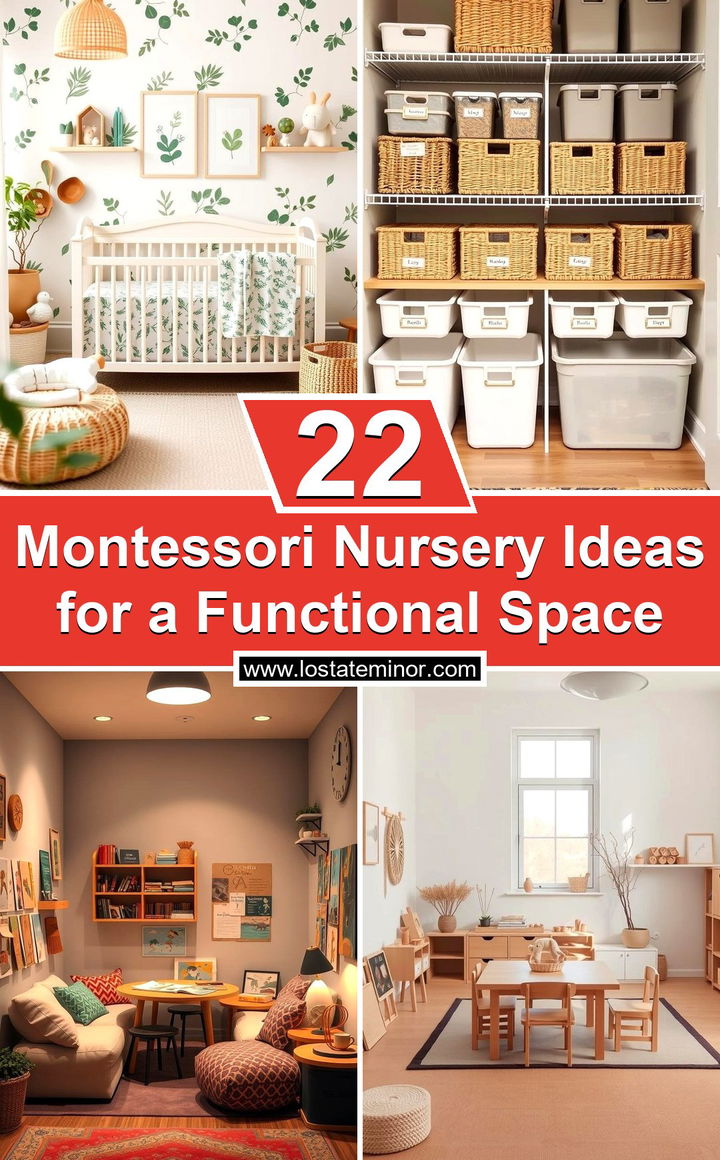
1. Child-Centered Layout
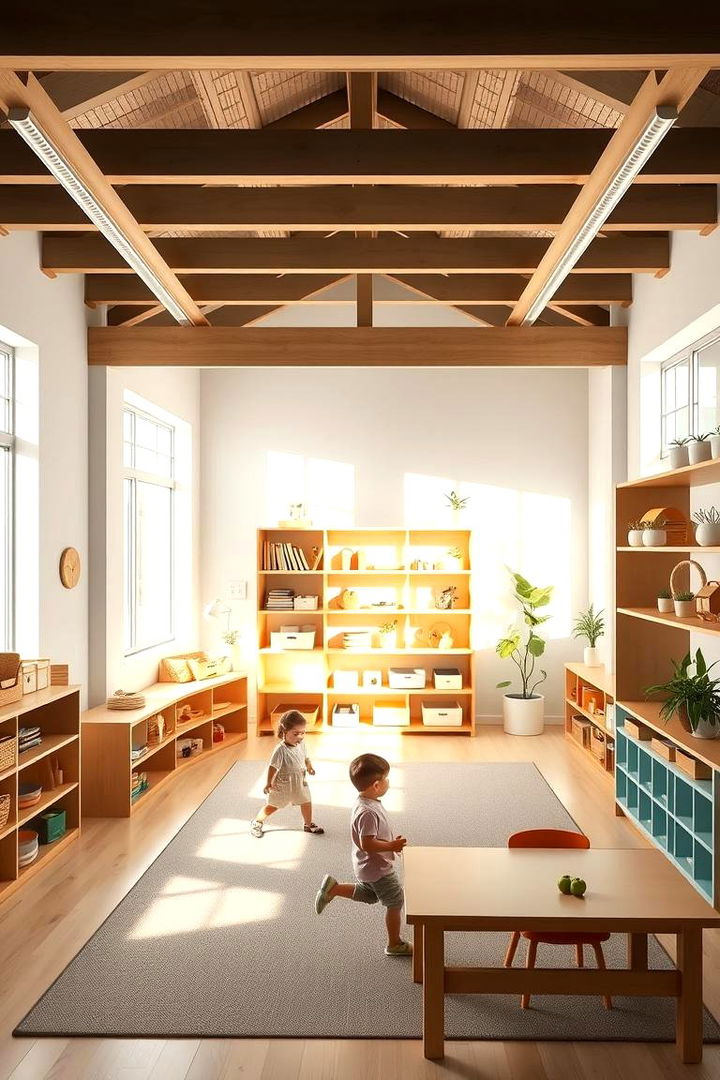
A thoughtful child-centered layout creates a foundation where independence and exploration thrive. By placing learning materials at a child’s level, the space naturally encourages self-directed play and decision-making. Designers prioritize clear pathways, accessible shelves, and purposeful zones that invite curiosity. The arrangement not only boosts confidence but also builds practical life skills from an early age. This environment instills a sense of ownership in little ones, making everyday tasks enjoyable and meaningful. Such ideas spark creative thinking and set the stage for lifelong learning.
2. Low Shelves Design

Consider the benefits of incorporating low shelves in a Montessori nursery, where every object is within reach. Low shelves invite children to independently choose and return materials, fostering responsibility and a tidier environment. This design strategy supports the natural order and encourages self-organization by giving kids a direct role in managing their belongings. The simplicity of low shelves also improves accessibility, turning every shelf into a mini stage for discovery. With personalized storage solutions, children can partake in the joy of creating an organized, empowering space.
3. Natural Materials Use
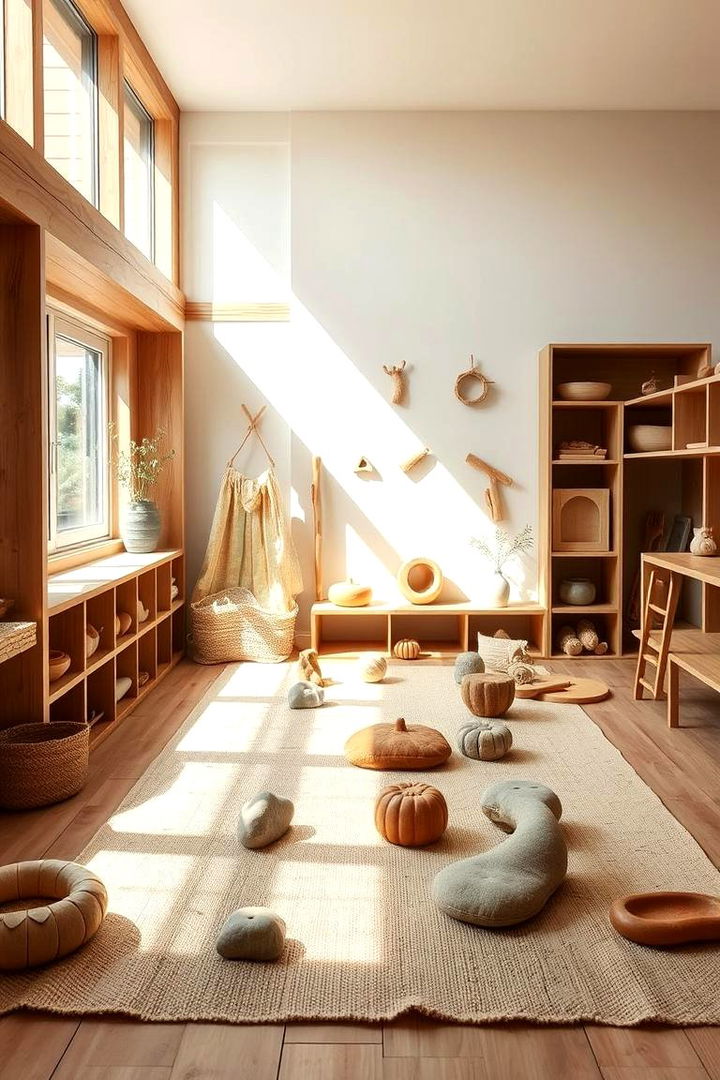
With an emphasis on natural materials, Montessori nurseries embrace textures and colors that harmonize with the environment. Wooden toys, cotton fabrics, and stone accents soften the space while sparking sensory exploration and tactile learning. This approach not only encloses the children in a calming, organic ambiance but also connects them with the beauty of nature. The durability and timeless appeal of these elements encourage a slow, mindful pace of discovery. Using natural materials also instills eco-conscious values, creating an aesthetically pleasing and sustainable learning environment.
4. Sensory Exploration Areas

What better way to ignite curiosity than designing dedicated sensory exploration areas? These spaces offer a variety of textures, sounds, and lighting that stimulate a child’s senses and promote focused play. Organized materials, such as soft fabrics, water elements, and gentle soundscapes, create an inviting zone for discovery. By engaging multiple senses simultaneously, children build connections between their experiences and the world around them. This setup is essential for cognitive and motor skill development, making every hour spent in the sensory area educational and immensely fun.
5. Organized Art Zones
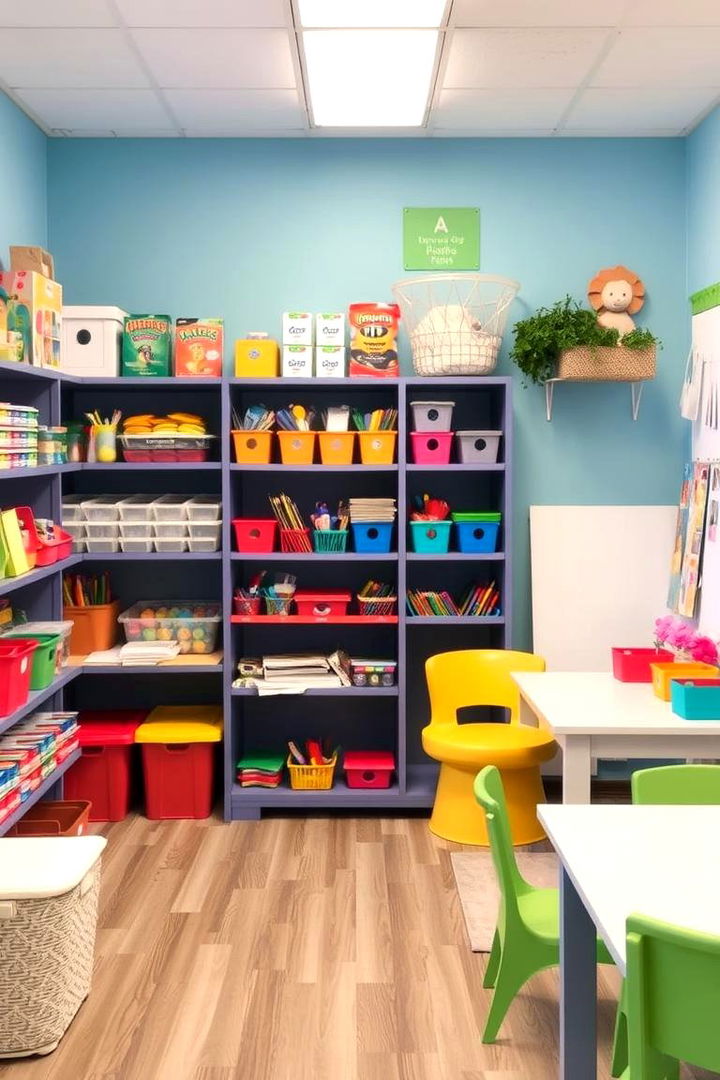
Another inspiring concept is a well-organized art zone, where creativity and self-expression are at the forefront. With child-friendly supplies neatly arranged, the art area encourages exploration of colors and shapes in a clutter-free setting. This carefully prepared zone allows children to experiment and express emotions through drawing, painting, or sculpting. The approachable design minimizes mess and maximizes creativity, empowering young artists to develop confidence in their talents. An inviting art space can become a cherished spot for learning while enjoying the process of creation.
6. Reading Corners
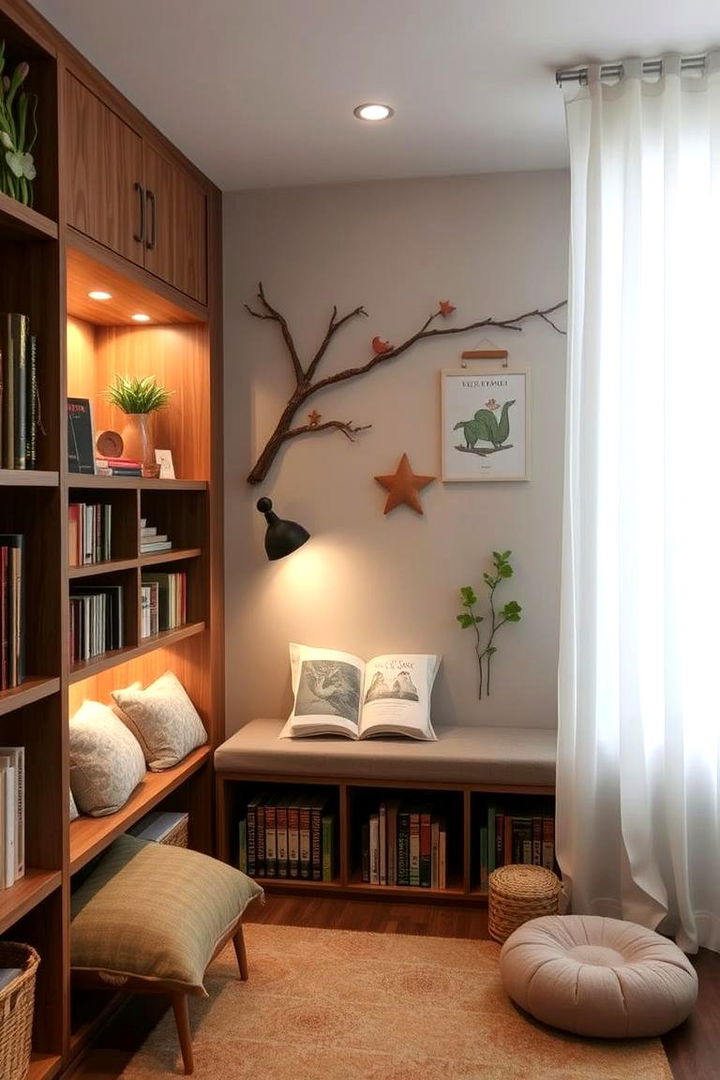
By creating a cozy reading corner, you can turn a simple space into a magical gateway for storytelling. This idea uses soft cushions, low bookshelves, and ambient lighting to foster a quiet, inviting nook for diving into books. Designed to keep literature in reach, the reading corner enhances vocabulary, concentration, and a love for stories. With gentle textures and soothing decor, children are encouraged to curl up, imagine, and explore new worlds. It’s an environment where independent reading blossoms into a lifelong passion for learning.
7. Practical Life Skills Stations
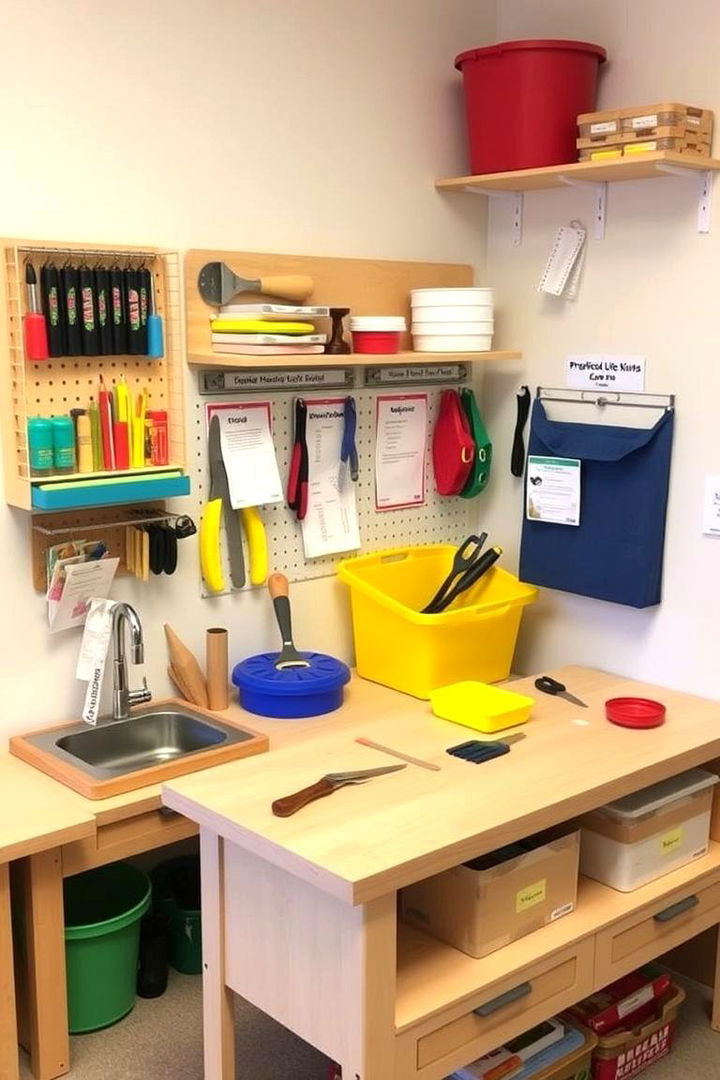
To inspire independence and confidence, practical life skills stations offer children an opportunity to engage in everyday tasks. These stations might include activities such as pouring, sweeping, or buttoning, all designed at a size management level for little hands. Hands-on interaction boosts motor skills along with problem-solving and practical reasoning. By learning through purposeful activities, children gain valuable skills that foster self-reliance. This realistic environment nurtures their growth, encourages responsibility, and prepares them for more complex challenges in life, all while feeling engaged and empowered.
8. Nature-Inspired Décor
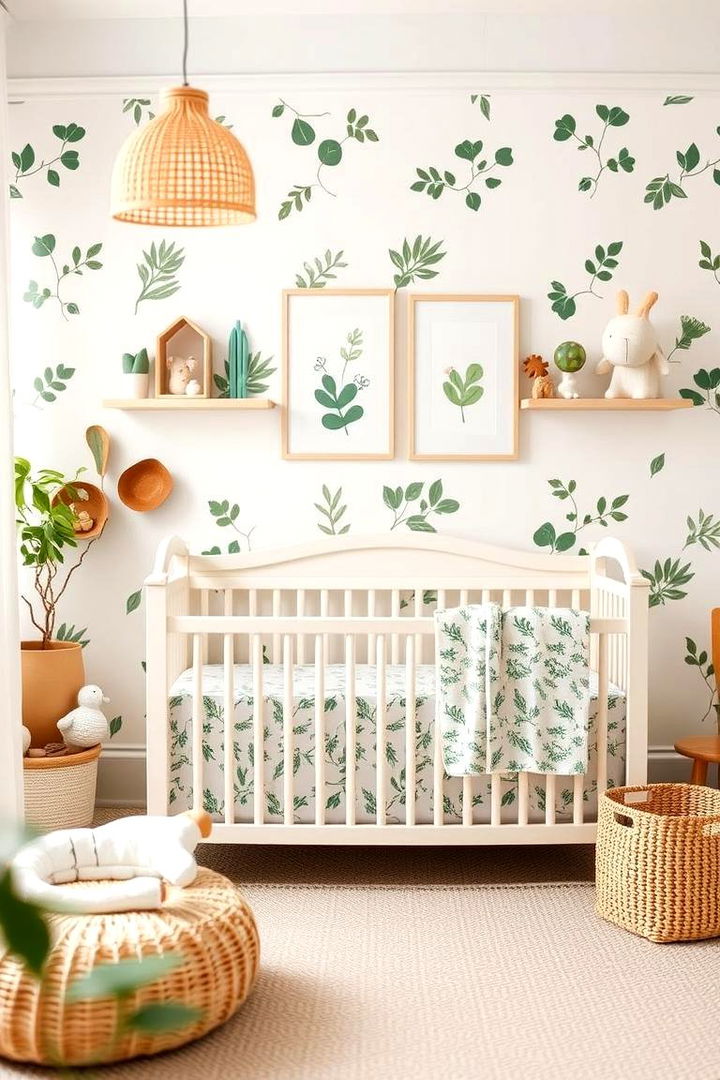
With nature-inspired décor, a Montessori nursery can echo the calming elements of the outdoors. Soft earthy tones, leaf motifs, and gentle imagery create an atmosphere that nurtures tranquility and focus. The décor often blends indoor elements with natural inspirations, making the space feel open and harmonious. This approach not only enhances visual learning but also builds a connection between the natural world and daily play. By incorporating organic patterns and colors, the nursery becomes a reflection of nature’s beauty, ideal for stimulating both imagination and respect for the environment.
9. Clean and Minimalistic Design
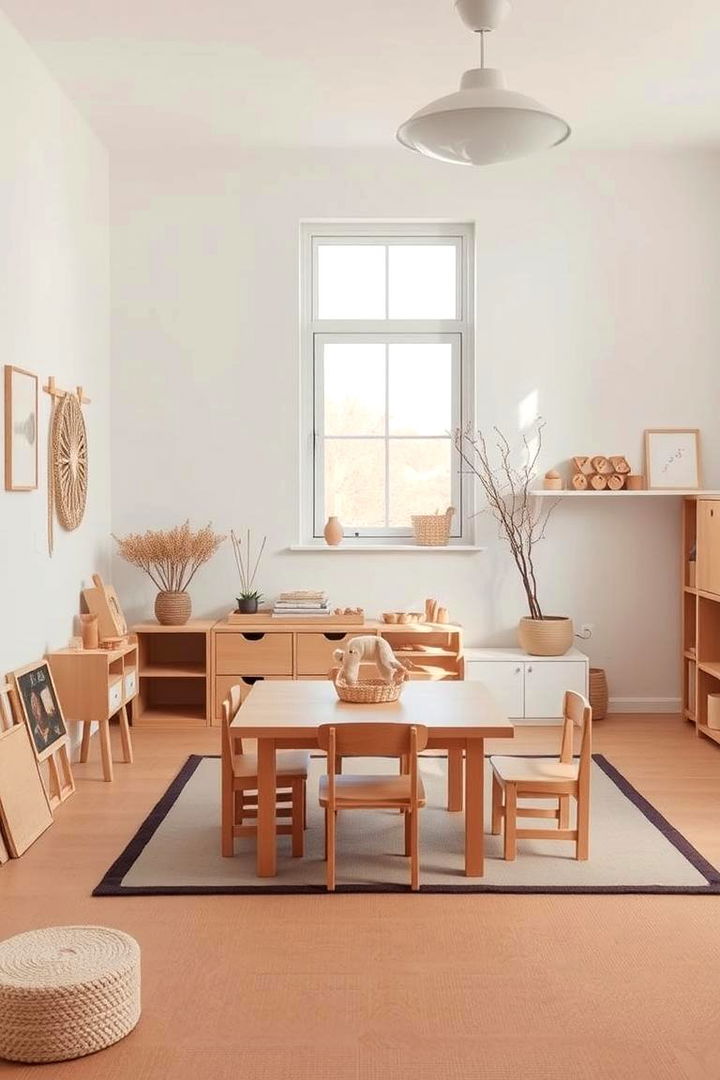
Unlike traditional cluttered playspaces, a clean and minimalistic design in a Montessori nursery simplifies choices and reduces distractions. Emphasizing only essential elements, this design facilitates clear thinking and focused learning. The removal of unnecessary items encourages children to engage deeply with a few enriching materials rather than being overwhelmed by options. This environment teaches the beauty of simplicity and mindfulness. Clean lines, neutral tones, and strategic use of space contribute to a calm, orderly atmosphere that supports peaceful play and organized learning.
10. Open Floor Play Space
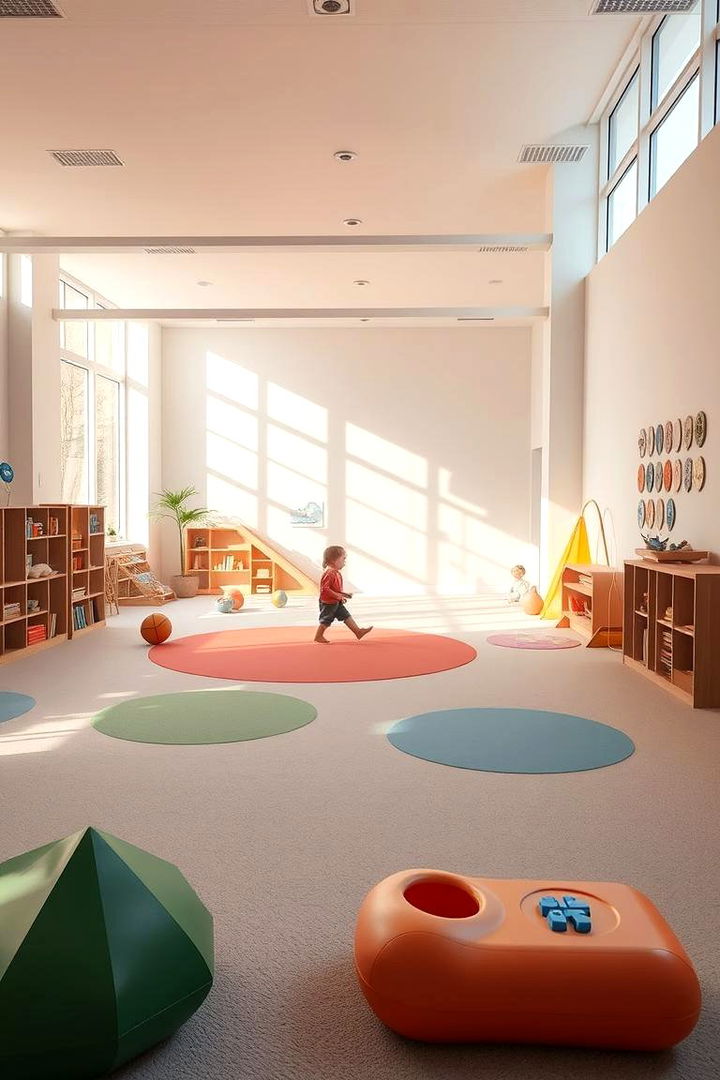
At the heart of effective Montessori design is an open floor play space that gives children freedom to move and explore. This spacious area offers flexibility for various learning activities, from guided play to spontaneous creativity. Unobstructed layouts promote collaboration and independent discovery, creating a lively yet controlled zone where each child can feel confident. The open space encourages physical activity and social interaction in a safe, thoughtfully arranged environment. It signals that every moment is an opportunity to learn, making it a central hub for dynamic and innovative play.
11. Child-Sized Furniture

Take advantage of child-sized furniture to empower little ones in a Montessori nursery. Furniture designed proportionally to children’s bodies isn’t only visually appealing, but it also fosters independence. Tables, chairs, and workspaces at kid-height allow for easy use and self-management, turning routines into playful practices. This thoughtful design ensures every item is accessible, reinforcing confidence and practical skill development. The inviting and proportionate dimensions allow children to enjoy a functional and comfortable learning space, transforming everyday tasks into moments of achievement and joy.
12. Functional Storage Solutions
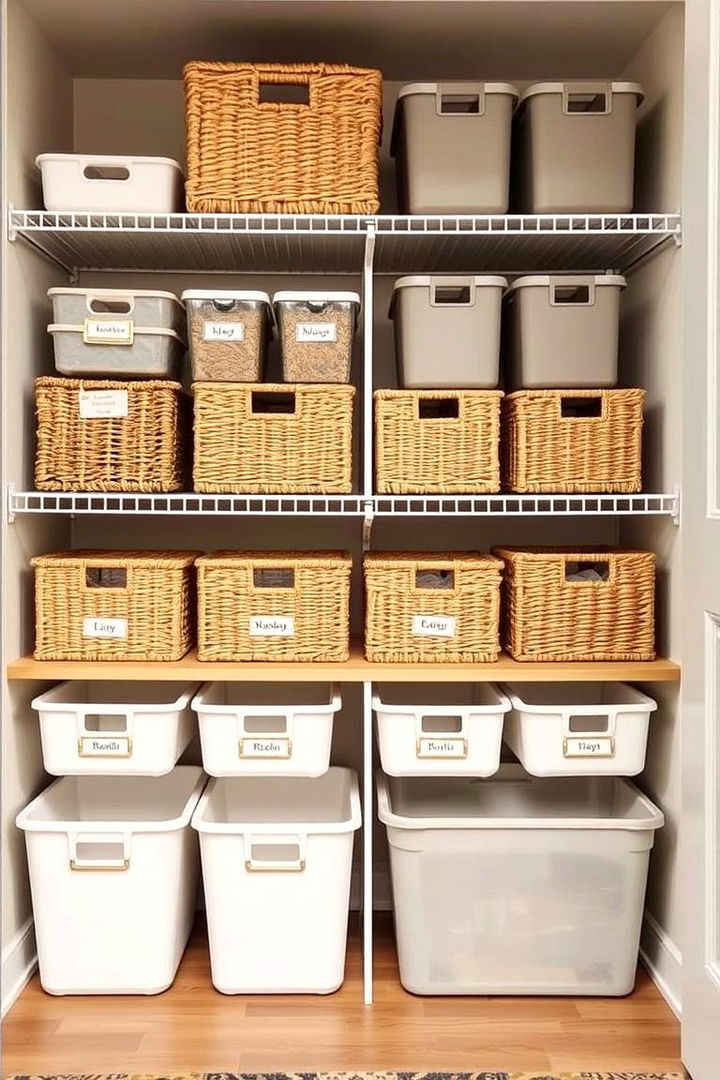
Additionally, functional storage solutions are essential for maintaining an organized Montessori environment. Clearly labeled, low storage units and baskets help children understand order while cultivating responsibilities in tidiness. A systematic storage area not only preserves the space’s beauty but also instills valuable organizational skills. Each container is carefully designed to be both practical and accessible, ensuring that every toy and tool has its place. This easy-to-navigate system empowers children to take charge of their surroundings while reinforcing habits that benefit their developing minds.
13. Creativity Nooks
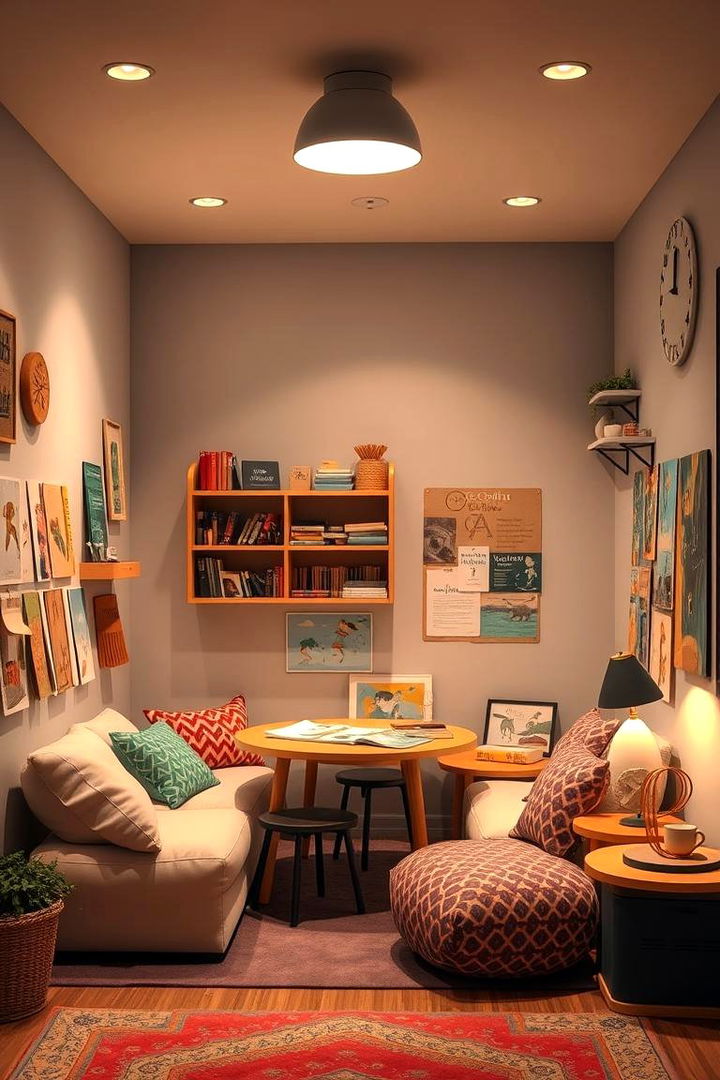
For those seeking a spark of inspiration, a dedicated creativity nook offers a quiet retreat for inventive minds. Thoughtfully designed with soft textures, movable seating, and ample light, this private corner becomes a personal haven for brainstorming and artistic endeavors. The setup is ideal for unhurried creative flow, allowing young imaginations to flourish. Equipped with diverse materials—from paper and crayons to natural objects—this space encourages free expression and thoughtful experimentation. It provides opportunities for innovation while fostering self-confidence, turning a simple nook into a launchpad for new ideas.
14. Soft Lighting Elements

Surprisingly, the subtle impact of soft lighting elements cannot be overstated in a Montessori nursery. Gentle, ambient lighting diffuses the space with warmth and calm, reducing overstimulation and supporting concentration. Natural light combined with carefully placed lamps creates a balance that caters to various activities throughout the day. Children experience a soothing environment that helps regulate mood and focus. Such lighting choices also add an aesthetic warmth, making every corner inviting. Integrating soft lighting elements is a small change that brings comfort, safety, and an overall nurturing ambiance to the room.
15. Color Therapy Strategies

To spark emotional balance and creativity, color therapy strategies are integrated into many Montessori nurseries. Muted palettes combined with strategic color accents stimulate both calmness and subtle energy. Delicate blues and greens promote relaxation, while soft yellows and oranges inspire optimism. This approach not only creates a visually pleasing space but also supports mood regulation and concentration. The thoughtful use of color helps children feel secure and engaged, letting them explore materials with ease. By using colors to subtly direct attention and calm nerves, every element of the room contributes to a harmonious and engaging learning experience.
16. Personalized Learning Stations
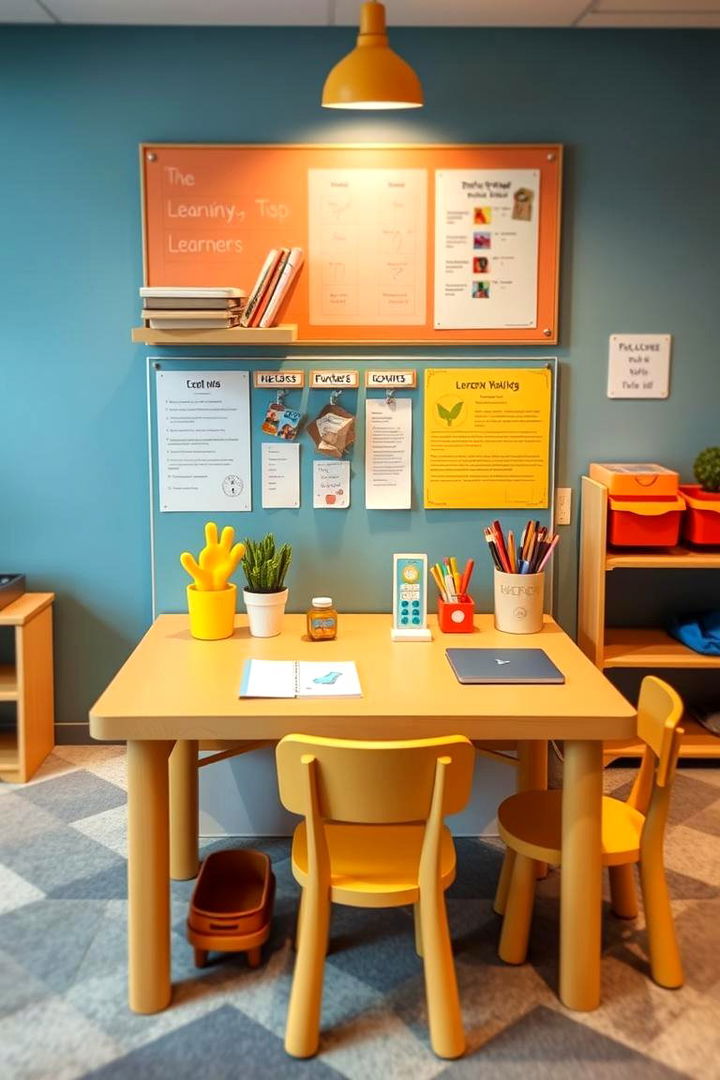
Another innovative aspect is the creation of personalized learning stations where each child has a dedicated area for work and exploration. Tailoring activities to fit individual interests ensures that every child feels valued and understood. These stations, equipped with age-appropriate tools and materials, encourage self-paced progress and inspire confidence. Personalization helps children navigate their learning journeys with ease while promoting engagement and curiosity. It offers a unique environment that celebrates individuality and nurtures academic and personal growth. With individualized stations, learning becomes a delightful personal adventure.
17. Outdoor Connection
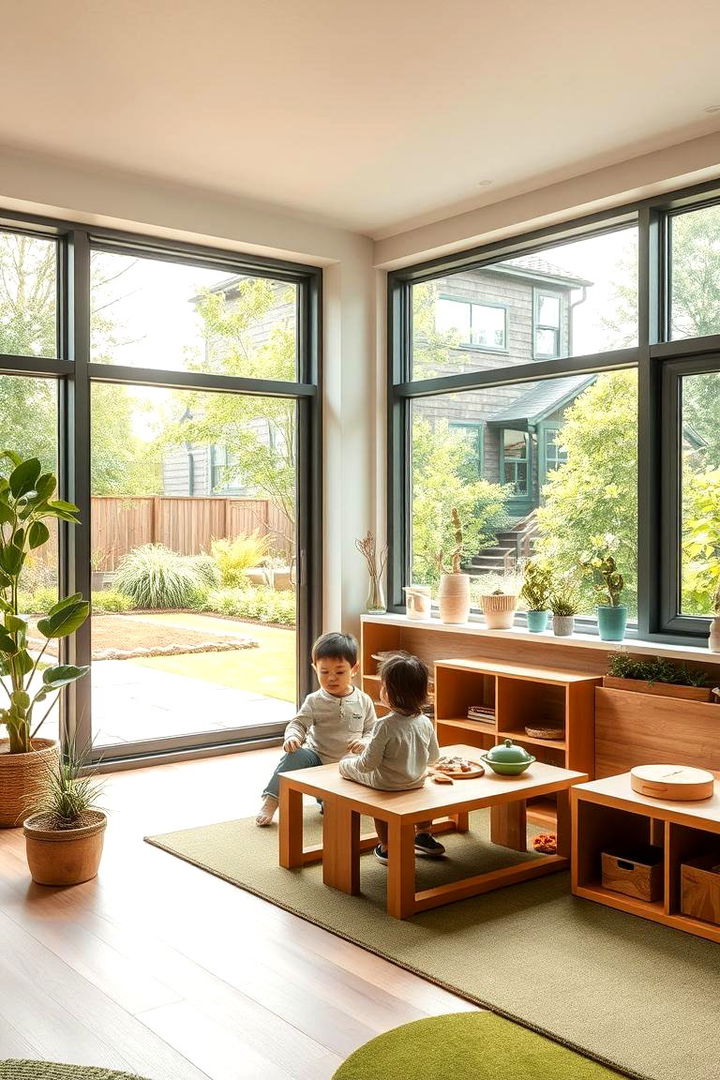
Under clear blue skies, designing a connection to the outdoors transforms the nursery into a dynamic learning space where nature plays a central role. Large windows, natural elements, or even a small indoor garden make the environment vibrant and engaging. This connection encourages children to observe natural cycles and fosters an appreciation for the environment. The interplay of indoor and outdoor elements stimulates both sensory exploration and creative play. It creates a continuous link between their safe haven and the broader natural world, making the space refreshing and environmentally inspiring.
18. Flexible Learning Space
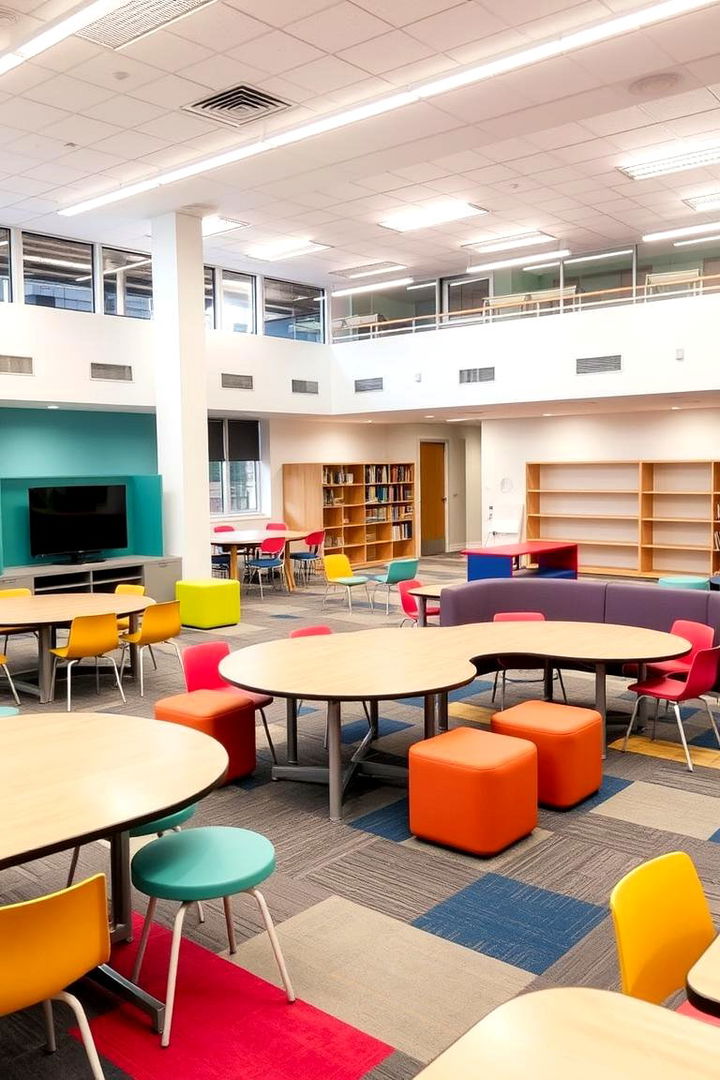
Due to the evolving needs of growing children, a flexible learning space is key in a Montessori nursery. Furniture that can be easily rearranged and multi-functional zones allow the room to adapt to different learning styles and activities. Whether it’s quiet reading, group play, or art projects, the room’s versatile design fosters adaptation and creativity. The ability to change configurations as needed nurtures problem solving and planning skills. Children learn to navigate various settings with ease, creating a dynamic and resilient environment suited to their natural pace of growth.
19. Easy-to-Clean Surfaces
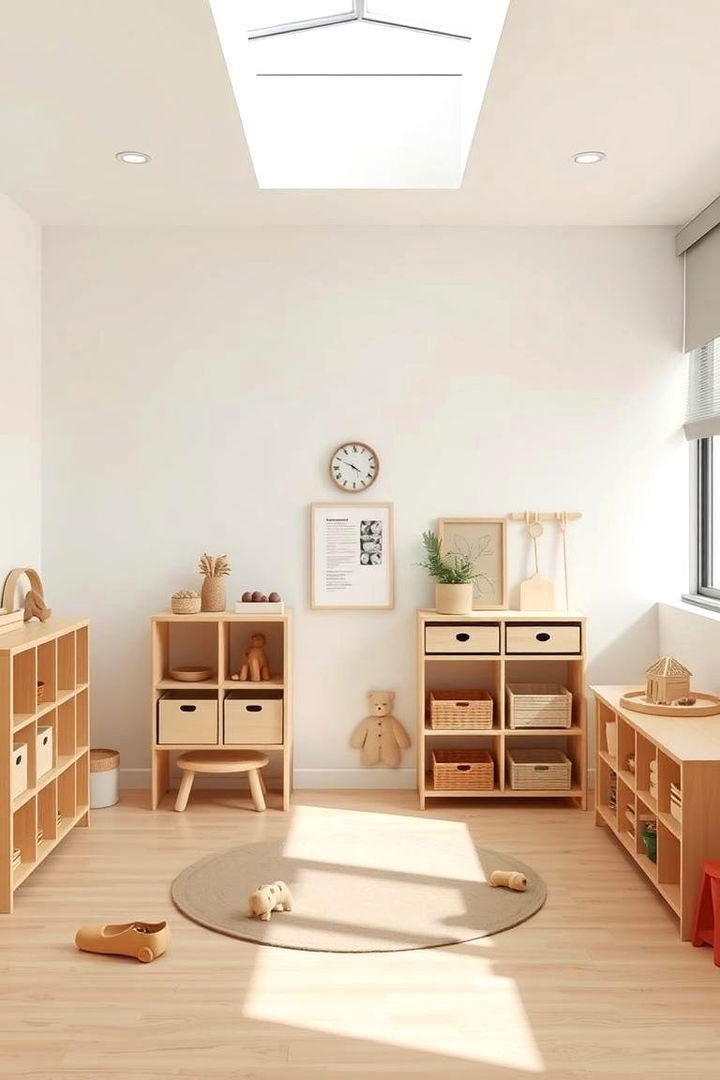
Owing to the active and hands-on nature of Montessori nurseries, integrating easy-to-clean surfaces is essential. Durable materials and washable finishes ensure that messes are handled quickly so that play and learning can continue uninterrupted. Smooth surfaces maintain both hygiene and visual appeal while enabling efficient transitions between activities. This practical design choice also models responsibility and respect for the space, teaching children to help keep their environment neat. In turn, the room remains inviting and stress-free, supporting a healthy balance of fun and structure.
20. Safety Considerations
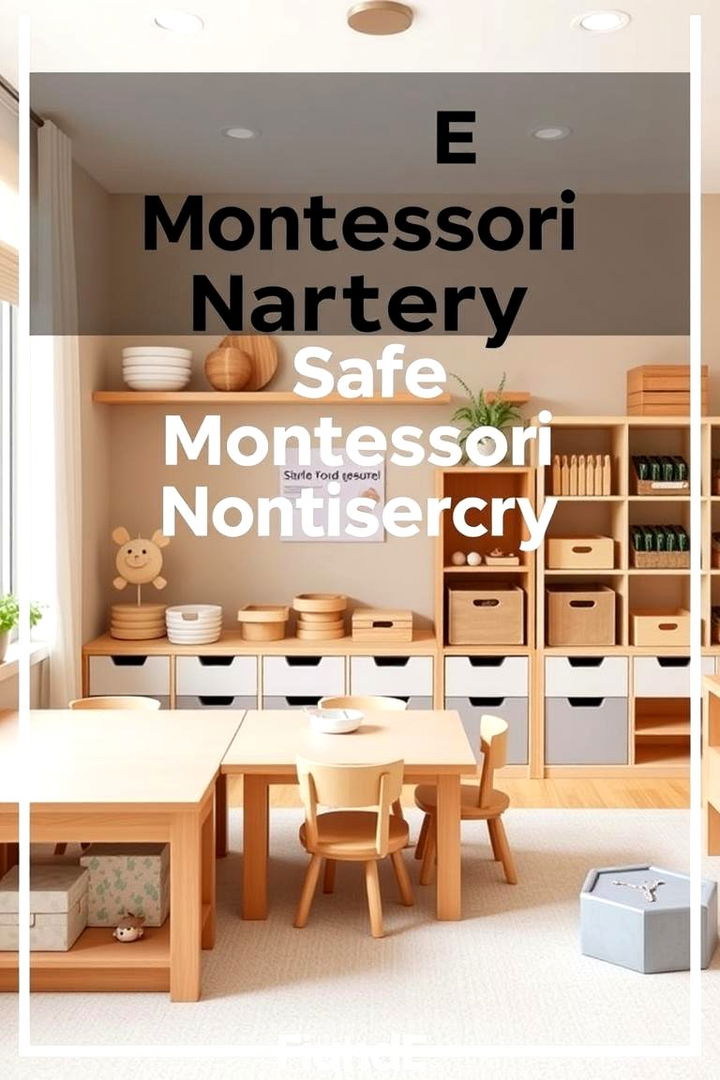
With safety considerations at the forefront, designing a Montessori nursery requires clear thinking about secure layouts and child-friendly materials. Rounded edges, non-toxic finishes, and secured storage units ensure every element of the room is safe and accessible. This proactive approach assures parents and caregivers while fostering a nurturing environment for curious minds. Safety features are seamlessly integrated so that children experience freedom in a protected space. By anticipating risks and addressing them with smart design choices, the nursery becomes a reliable sanctuary where exploration and learning happen without worry.
21. Multi-Sensory Integration

For a well-rounded approach to early learning, multi-sensory integration stimulates mind and body simultaneously. Dedicated areas for tactile play, auditory experiments, and visual discoveries encourage children to explore materials with all their senses. This thoughtful arrangement supports cognitive development and enriches learning experiences. Children engage in various activities that challenge them to touch, see, hear, and sometimes even smell different textures and stimuli. The resulting environment is alive with sensory cues that build knowledge and curiosity, making every activity an opportunity for enriched, integrated learning.
22. Eco-Friendly Concepts
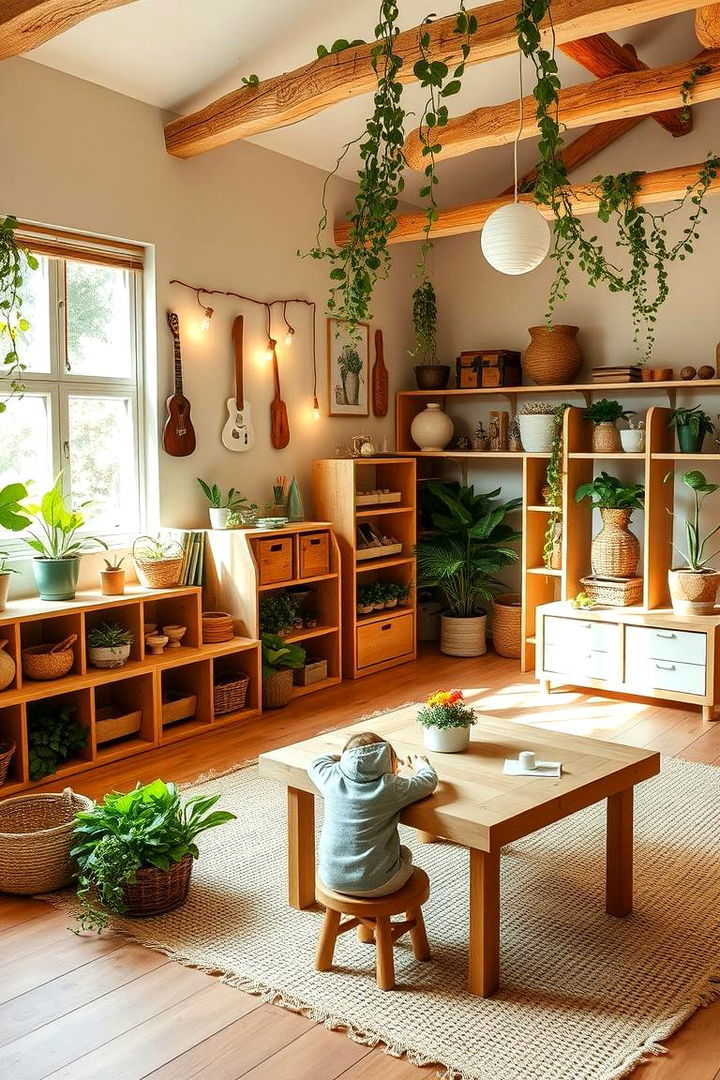
Taking an eco-friendly approach in designing Montessori nurseries reinforces sustainable living and environmental awareness. Incorporating recycled materials, energy-efficient lighting, and natural décor not only creates a greener space but also teaches children vital lessons in conservation. This commitment to sustainability fosters responsibility and inspires innovative, earth-friendly solutions. An eco-friendly nursery is practical, beautiful, and aligned with the natural world—a perfect backdrop for nurturing curiosity and respect for the environment. Each eco-conscious decision contributes to a harmonious balance between play, learning, and environmental stewardship.
Conclusion:
Reflecting on these Montessori nursery ideas reveals a tapestry of practical, playful, and profoundly nurturing strategies. Each element—from child-sized furniture to multi-sensory learning and eco-friendly design—builds a holistic environment where independence, exploration, and creativity flourish naturally. The thoughtful convergence of these ideas creates spaces that empower little learners and instill lifelong skills. With each Montessori nursery idea, children discover a world tailored just for them, reinforcing wonder at every turn and the value of an environment designed with care. Embrace these 22 montessori nursery ideas to transform your space into a nurturing haven.
